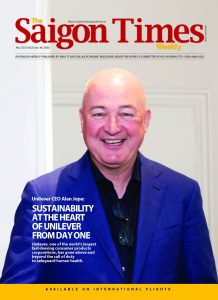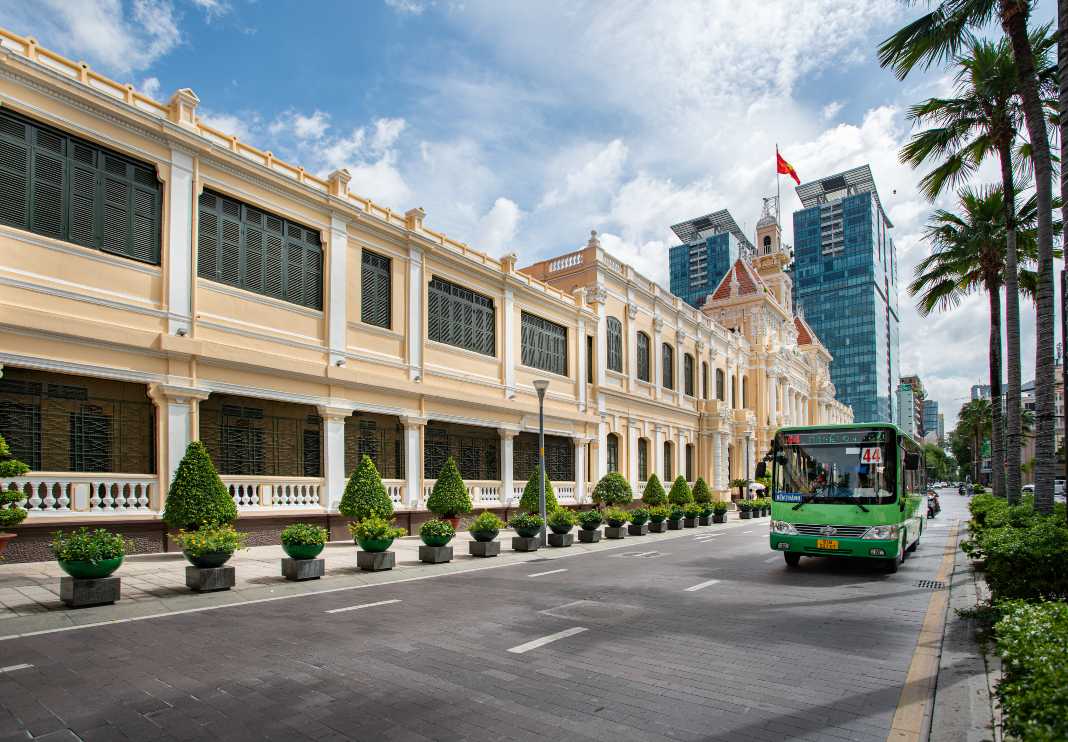Industrial production and commercial-service activity fell sharply as 2022 came to a close, indicating a daunting year ahead for HCMC’s economy. Amid mounting challenges, internal momentum in the city’s core industries seems to be essential to retain its economic vibrancy.
Evaluating economic resilience
HCMC’s economy has bounced back strongly in the aftermath of the Covid-19 pandemic, though it has yet to reach the heights of 2019. The retail sector aggregate demand appears to be falling after a spike to its pre-pandemic level. Local consumption remains subdued during a puzzling holiday shopping season, representing barely 80% of the total spending in 2019.
Compared to data of 2019, HCMC’s consumption in 2022 had its bottom line at 23.37% in November. The reduction mirrors the dramatic dip recorded in the second quarter of 2021 when the pandemic swept across the city. In other words, the rapid economic recovery of HCMC in 2022 came to a standstill in the last quarter of the year.
In particular, sales of commodities that had significant rises in the third quarter, including automobiles and other vehicles, jewelry and household goods, have faced year-end headwinds. As for the rest of the economy, the food, educational and cultural products, timber and construction material sectors also took a hit. The city’s economy, which had begun to heal in the third quarter of 2022 following the Covid-19 decline, crumbled once again.
Consumption in HCMC is now close to VND54,000 billion, making it hard for local retailers to seek substantial profits after two pandemic holiday seasons. Unfortunately, consumer demand has remained flat as the peak season is approaching. Deal-making efforts appear less promising this year as the holiday season, lasting from Christmas to the Lunar New Year, or Tet, is shorter than usual. The first few months of 2023 may be particularly tough for HCMC-based firms.

On a monthly basis, the 10% year-on-year rise in retail sales is possible under normal market situations. In 2022, however, new obstacles emerged as the previous ones were still being tackled. The fourth quarter’s consumption thus was only 80% as high as in 2019.
The commercial and service sector accounted for around 65% of the city’s gross regional domestic product, making it the major engine of growth in the city. Nonetheless, the current sluggishness of this sector has cast a shadow on the overall picture, as its functioning carries wide-ranging implications for the city’s economic health.
Vehicle sales appeared to be a silver lining in the fourth quarter’s dismal outlook. Two out of three major aspects of the sector saw revenue gains of over 50% compared to the same period last year.
In 2022, foreign investments in labor-intensive sectors decreased over 2021 and 2019, declining by 9.0% and 97.3%, respectively. In contrast, international capital inflows in education and training, as well as scientific and technological endeavors, surged sixfold from 2021 and 1.2-fold over 2019. Meanwhile, the number of real estate projects financed by foreign investors has remained the same. Compared to the 2019 and 2021 data, the 2022 total quantity of capital remained steady at 0.5% and 0.7%, respectively.
Third-quarter industrial output hit a record high. However, growth had even largely ended as of November 2022. Negative growth is predicted to begin in December 2022 and last until February 2023, with the major driving force coming from a 24% reduction in the computer and electronics sector, a 15% drop in the non-metallic mineral business, and a 37.3% decline in the wood industry. The falls look even worse than those that occurred during the pandemic’s peak months. At the time, HCMC’s manufacturing sector saw year-on-year growth of 8.5% each month, and it could enjoy a staggering 12.6% under ideal conditions.
In September 2022, interest rate hikes stimulated attempts to boost capital mobilization among HCMC’s credit institutions. But the trend abruptly leveled out in October 2022 and began to decline a month later.
In a larger context, however, the city’s financing activities happened regardless of interest rate regulations, which had been consistently around 8% for years. Money flows have transferred throughout financial institutions as the market has seen neither mobilized capital rise nor abundant idle cash. It seems that local lenders are using interest rate policies as an instrument to increase their market share and optimize profits. In this regard, growing capital costs might cause painful impacts on the local economy, including higher inflation and slower growth.
The gap between lending and capital mobilization also reached an all-time low in November 2022. The interest rate rises might extend until banks can gain their desired market share. Eventually, the hikes will likely draw to an end and remain stable till the end of the year. In this sense, a higher credit growth limit may help, giving firms access to much-needed cash to keep businesses afloat this year. Conversely, the higher the credit limit the higher the interest rates will be.
Prospects in retail and manufacturing sectors
Facing a bleak outlook for 2023, opportunities may arise for HCMC’s economy, given the expansion potential in a range of key driving industries.
The retail industry may soon recover despite the challenges in the first quarter, according to experts. Perhaps the current slowdown is merely a hiccup and a recession may not happen anytime soon. The sector’s revenue will increase to the level shown in the 2019–2020 period, thanks to holidays and shopping seasons in the first months of the year, including New Year and Tet festivals.
Experts are also pinning hopes on the industrial sectors. In HCMC, there is reason for optimism in energy production, water resource development and treatment. Among the city’s growing impetus, the given sectors have appeared to play essential roles in keeping HCMC’s economic dynamism on a high note in the years to come, at least for 2023.
(*) Pham Thi Thanh Xuan, PhD, Luu Bich Thu, M.A., Tran Thanh Truc, Huynh Thi Ngoc Ly, M.A., Ho Huu Tin, M.A. – University of Economics and Law – Vietnam National University HCMC
(**) Vo Phuoc Tri – Data science of The Gioi Di Dong Information Technology Limited Company









